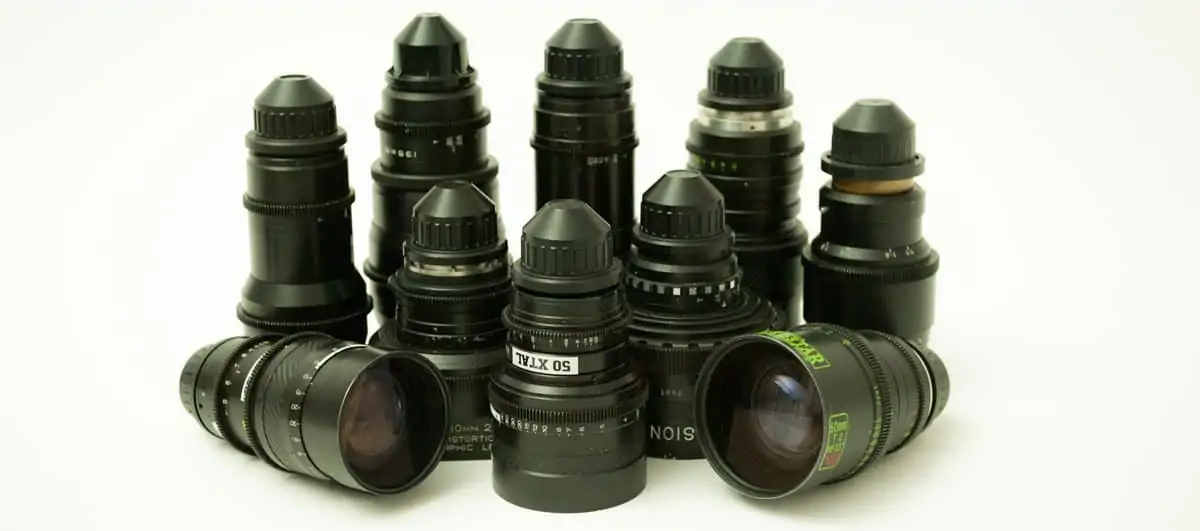Two new full-frame cine zooms and a new broadcast servo zoom from Canon extend DPs’ cinematic choices for a range of applications.
Canon’s new Flex Zooms, their first full-frame cine-zoom lenses, are now shipping. The CN-E20-50mm T2.4 L F / FP and CN-E45-135mm T2.4 L F / FP are aimed at high–end feature, TV drama and commercial productions. “These lenses are very much targeted towards high-resolution, high-dynamic-range capture,” says Canon’s Barry Griffin, segment manager for production.
The Flex Zooms are designed to match the look of Canon’s popular CN-E full-frame primes. “They have the same look and feel as the CN-E prime lenses that everybody knows and loves – that warm tone, great skin colours,” Griffin continues. “Within these two lenses [20-50mm and 45-135mm] we’re covering off the same focal lengths as our most popular prime lenses.”
The advantage to filmmakers is speed, as demonstrated by Goodbye Justice, a trailer for an imaginary western shot by Ember in collaboration with Canon Europe. The flexibility of the zooms, along with their fast and consistent speed of T2.4, meant that the crew could shoot a wide range of scenes for the four-minute trailer, giving the impression of an entire feature, in just two days. “That’s where the lenses came into their own,” says Griffin. “There didn’t have to be multiple changes of lenses; the lenses could be kept on. They’re actually quite light and small in form factor as well for what they actually offer.” The 20–50mm weighs in at 3.3kg, and the 45–135mm at 3.4kg. “It’s that flexibility of being able to put something on for a quick turnaround job, in high–end production, which is happening more and more.”
Goodbye Justice’s director-DP Jonathan Jones was impressed. “Within the cast we have multiple different skin-tones and ages,” he explains in a behind-the-scenes featurette. “What we’re seeing is that the lenses are really beautifully handling the differences in skin, both in colour and texture. Also, in very bright sunlight, we’re getting a really beautiful focus roll-off.”
Both the trailer and the featurette can be found on Canon Europe’s YouTube channel. “It’s really showcasing what the lenses can do, that cinematic look and feel, that movie type quality we’re trying to aim at,” says Graham Payne, product business developer – ISB Business.
“It really performs like a prime lens,” says filmmaker Ian Murray in the CN-E20-50mm’s launch video, released by Canon in April, “like a really high level, like a Master Prime type.”

The Flex Zooms are fully equipped to meet the needs of modern workflows, as Griffin notes: “With the PL mount, Canon have put into this the Cooke /i Technology™ communication but also the ZElSS eXtended Data™ communication, so metadata information can be captured quickly and easily with these lenses… That’s gone down really, really well within the industry.”
The zooms can also be changed to EF mount by Canon’s servicing facility, though filmmakers using Canon’s own C5OO Mark ll can switch the camera’s mount to PL if they prefer. “It’s something a lot of people like about our lenses, that the mount can be changed quite conveniently and easily,” Griffin remarks.
For those working in mid-tier film and broadcast, Canon recently announced the CN8x15 IAS S E1/P1 Cine-servo Zoom. An update to the highly successful CN7 lens, the CN8 boasts a 15-120mm zoom range and a built-in 1.5x extender. This extender serves to magnify the image on a Super-35 sensor, or to increase the image circle to cover a full frame. ln the latter case the zoom range becomes 22.5–180mm, so a huge range of framing options are possible with either sensor size.
Pairing the CN8 with the existing CN1Ox25 IAS S (also equipped with a 1.5x extender) provides even more flexibility. “Within rental houses, they now have an offering within two lenses for Super-35 coverage from very wide to very long, but they can offer it for their full-frame cameras as well, with a servo drive,” says Griffin.
“l think it surprised everybody what Canon have been able to do here. The conversations I’ve been having with end users and with rental production houses – they are thinking – they know – the CN8 is going to become one of the most successful standard wide lenses, like the CN7 was, over the coming years.”
The removable servo, coupled with the availability of both EF and PL mounts, opens up a wide range of applications. As with the Flex Zooms, the PL mount transmits Cooke /i Technology™ and ZEISS eXtended Data™, while a 16-bit encoder can be connected for the additional positional information needed in, for example, virtual production.
“Anything studio based, you’ll find these lenses being very heavily used,” Griffin says of the CN8 and Canon’s other Cine-servo zooms. “Of course, they’re flexible enough to be used also within the documentary world. You’ll see these lenses being used in mid-tier film and TV drama as well.”
With 11 iris blades, the CN8 provides a cinematic look. “Optically, of course, it’s going to perform like you’d expect from Canon,” Griffin continues. The maximum iris ranges from T2.95-T3.95, or T4.4-T5.9 with the extender. “As a workhorse, having the servo drive, having the angle of view, you will see these in studio work, broadcast work, natural history and stuff like that – for quick capture.”
Canon’s new zoom lenses will be on display at Camerimage and at BSC Expo in the new year.
Please visit https://www.canon.co.uk/pro/cinema-lenses/ to find out more.
–
This article is sponsored by Canon.


















